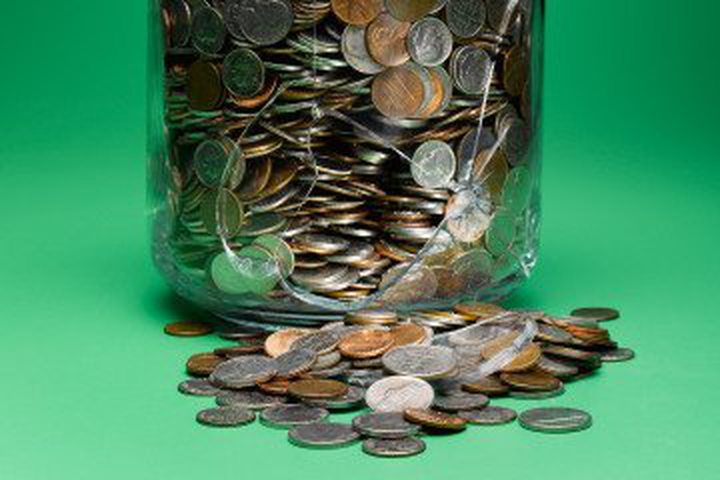Top 10 Recession and Budget Trends

10. Fast Food Goes Gourmet
Walk into any of the major fast-food establishments and you’ll find items that don’t exactly seem like fast food. Apple pecan chicken salads, bacon portabella burgers, yogurt parfaits and caramel mocha iced coffee drinks are all part of fast food’s strategy to compete with the rise of so-called fast-casual restaurants like Five Guys, Chipotle and Panera Bread — places that offer better-quality items but don’t include full table service. Fast-food mainstays like McDonald’s, Wendy’s and Burger King have revamped their menus after seeing the fast-casual crowd — restaurants that have dramatically increased their outlets as well as same-store sales — bite into their business. But it’s unclear whether the moves will work. McDonald’s, which has reported some rare sales slumps recently, may be suffering from a focus on its more premium items. While it’s evident that consumers like the sorts of items offered by restaurants like Panera and Chipotle, they might not want those items from fast-food establishments.
9. Travel Fees Aren’t Just at the Airport Anymore
Until recently, the only fees that travelers had to worry about were from airlines. Paying more for checked luggage, seat reservations, in-flight meals and just about anything else the airlines could think up (we’re looking at you, Spirit) had become commonplace. According to a study by industry analyst IdeaWorks, airline fees rose 11% this year over 2011 and hit an all-time high of $36.1 billion. Now add-on fees are becoming pervasive in other parts of the industry. According to a report from New York University, the lodging industry is expected to bring in almost $2 billion in fees and surcharges in 2012, a $100 million jump over last year, for everything from early-departure penalties and using a hotel’s business center to going online and canceling reservations early. Meanwhile, the cruise industry has started conjuring up new costly services for its customers, including charging for early boarding, on-shore outings and even dinner reservations.
8. Small Cars Are the Next Big Thing
Think small. That’s what more of today’s car buyers are doing. But it’s not just new Volkswagens they’re buying. After several years of high gas prices and a sluggish economy, it seems U.S. consumers have finally taken to the idea of buying small, eco-friendly, fuel-efficient vehicles across the board. About half of all new cars sold in the U.S. now have smaller four-cylinder engines. Meanwhile, federal fuel-efficiency standards — which will double the m.p.g. standards for cars and light trucks by 2025 — will continue putting pressure on manufacturers to produce vehicles with smaller engines and better fuel economy. Consumers seem to be on board at a time when the industry as a whole has recovered after the government bailouts. Sales were up 13% in September from a year ago and are currently at their highest point since February 2008.
7. The Rise of the Irrational Consumer
Most of us would consider ourselves rational consumers. We buy what we need. We try not to overspend. We save where we can. But in many ways, 2012 was the year of the irrational consumer. Just take a look at JCPenney’s epic rebranding fail. Late last year, Apple’s Ron Johnson became the department-store chain’s new CEO and soon introduced a “fair and square” pricing and marketing strategy in which the retailer abandoned discounts, rid itself of coupons and simplified prices. It flopped. It turns out that we like rushing to stores for weekly promotions and markdowns — even though we know the sale prices are being discounted from inflated original prices. And we like prices that end in .99 because it looks less expensive. Similarly, consumers have taken to layaway in a big way after big-box stores brought it back following a hiatus of several years. Why is layaway irrational? First, it adds fees to purchases that often wind up costing consumers more than if those items were charged to a credit card with a reasonable interest rate. The purpose of layaway is to help people save for items over time. But you don’t need a program (or the fees that go with it) to do that. All you really need is a piggy bank.
6. Gas Prices Hit Record Highs — Again
It seems as if we flirt with record-high gas prices every year, and 2012 was no different. In September, the national average for a gallon of gas was $3.88 — the highest ever for that time of year. Americans were even paying record prices after Labor Day, which is historically when prices dip after the peak summer driving season. A number of factors were to blame, namely the Middle East unrest that boosted oil prices coupled and the hurricanes that wreaked havoc on U.S. refineries. Ultimately, this year will be remembered not just for high gas prices but also for the unusually large price swings across the country. California’s gas prices plunged more than 80 cents in less than a month between October and November, while nationwide in October, they fell more than they had in over a year.
5. More Americans Are Unbanked
It’s more difficult than ever for Americans to open and maintain a checking account. According to the Federal Deposit Insurance Corporation, 1 in 4 households is either unbanked or underbanked, meaning it has a bank account but uses alternative financial products like payday loans or prepaid debit cards. The percentage of Americans who were unbanked in 2009 was 7.7%; that has risen to 8.3% and doesn’t seem to be stopping. Why? Banks are becoming too expensive. Free checking is becoming a relic as banks add monthly maintenance fees and charges for services like getting a bank-statement copy or closing an account. This is mainly in response to the Consumer Financial Protection Act, which closed off other forms of revenue for banks like overdraft fees, but the effect has been leaving more and more lower-income Americans without a convenient and inexpensive place to conduct basic financial transactions. Those who can’t afford the fees are increasingly turning to alternative banking solutions — most of which have outrageous fees of their own — to cash checks and gain access to credit, financially squeezing them even further.
4. Student Debt Surpasses Credit-Card Debt
For years, student debt has been on the rise as the cost of college gets more and more expensive, and tightening budgets mean financial-aid packages are tipping more people toward loans and away from grants. But according to the Federal Reserve, Americans now owe more student debt than credit-card debt. Not only that, but total student debt hit the $1 trillion mark for the first time. The Great Recession is one cause, as it pulled Americans from a weak labor market back into college or graduate school. It’s no wonder that the debate over whether a college degree is worthwhile has raged on. Getting a degree still puts graduates on a path to earn much more than high-school grads, but endless tuition hikes have called into question the very value of a degree. More than ever, anti-college advocates are pushing the idea of skipping higher education altogether for more-entrepreneurial pursuits. Unfortunately, for those still choosing college, skyrocketing tuition doesn’t appear to be waning, and neither does employers’ emphasis on degrees.
3. Retailers Hit Back at ‘Showrooming’
“Showrooming” — the consumer practice of using brick-and-mortar stores to check out products before going online to buy them for less — has been around for several years. But in 2012 brick and mortars started fighting back, and Amazon — which has encouraged the practice through its price-check app — is the biggest target. Target and Walmart, two of the largest retailers in the world, announced they would no longer sell Amazon’s e-readers. Target also released its own shopping app to incentivize in-store purchasing. Others got in on the showrooming counterpunch as well. In the run-up to the 2012 holiday season, Best Buy announced that it would match the prices of Internet competitors, and stores like Toys “R” Us are beginning to offer products that can’t be found elsewhere, making it impossible for consumers to showroom. But it’s still not clear how harmful showrooming is to retailers. According to a study by mobile-marketing firm Vibes, only one-quarter of showrooming shoppers — 6% of shoppers overall — choose to buy online items they had checked out in physical stores. It turns out that while most people will comparison-shop, they are still likely to buy items at brick and mortars. A study by Deloitte showed that consumers using a smart phone while shopping are 14% more likely to purchase items in a store. While Amazon still has the upper hand, we’re only seeing the first skirmishes in the online-vs.-brick-and-mortar war that’s likely to last years.
2. U.S. Consumers Shed Debt — Then Start Taking It On Again
The Great Recession put debt firmly in the spotlight for many consumers. For the past several years, we’ve been “deleveraging,” either by paying off credit cards or mortgages, or, unfortunately, defaulting on debt. Either way, our debt finally hit pre-recession levels in 2012. Recently, household debt has been on the rise again. But this time, analysts are viewing it as a good thing. That’s because it may signal that we’re ready to spend and invest again. According to the Federal Reserve, two of the last three quarters have seen Americans’ total household outstanding debt — which includes credit cards, mortgages and auto loans — increase. As long as we’re smarter with debt than we were before the recession, this may prove to be a turning point for the economy.
1. The Real Estate Market Finally Hits Bottom
It happened. It finally happened. The housing market, almost four years after the Great Recession, found the floor. It fell further than most people thought it would, but 2012 will be remembered as the year when home values reached the bottom and started ever-so-slowly to rise again. According to the latest S&P/Case-Shiller index, home prices are up across the country. There were 2.3 million houses on the market in the third quarter, as opposed to 2.9 million year on year, according to the National Association of Realtors. Seasonally adjusted, total existing-home sales were up 10% in the same period, according to NAR. Meanwhile, the number of completed foreclosures hit 57,000 in September — half the number in September 2010 at the peak of the crisis, according to industry analysis firm CoreLogic. Now the question is whether the housing recovery will hold — and if so, whether it will spur a larger U.S. recovery.




